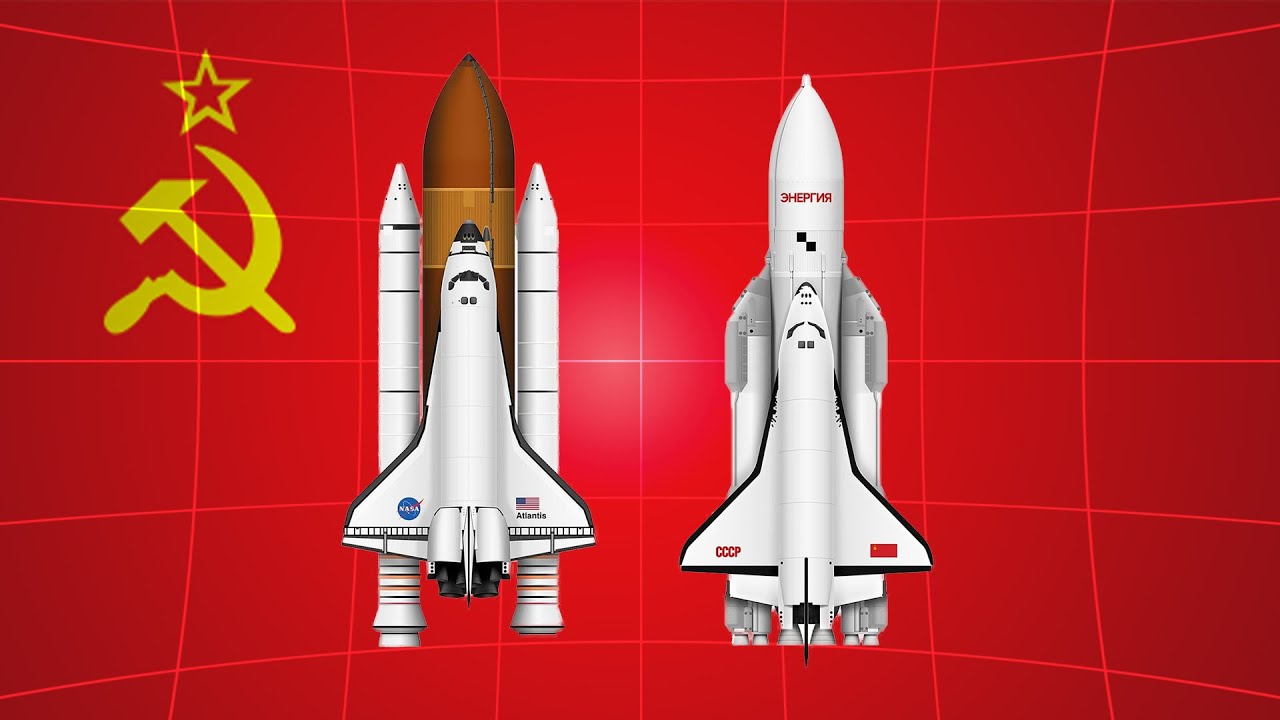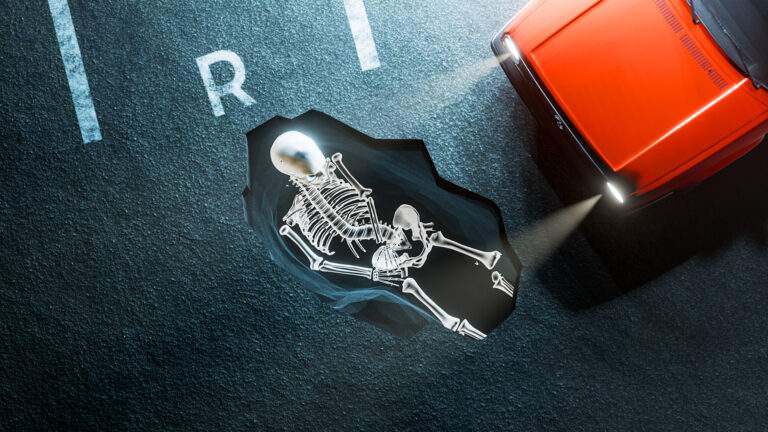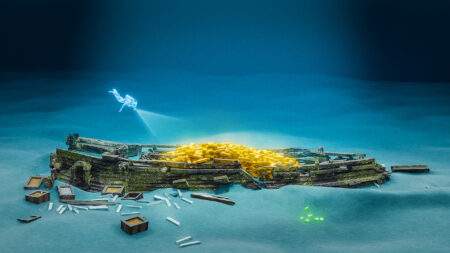The first and only landin of the Buran occured in 1981, 7 yeas after the Space Shuttle completed its firsst flight. For over a decade, the Soviet Union had been secretly working on their own space plane called the Buran, which had a remarkable resemblance to the Space Shuttle.
With an almost identical shape and color scheme, it was clear that the Soviets had taken a lot of inspiration from America’s Shuttle. But it wasn’t clear how the Soviets managed to copy the design and catch up to the American’s so quickly.

US and Soviet competition
The US and the Soviet Union already had a history of intense competition when it came to space. The Soviets took the record for launching the first satellite into orbit and then America managed to beat them to the Moon. But they also had periods of healthy cooperation.
With the Apollo-Soyuz project in 1975, both nations joined their two spacecraft together in orbit, where crews from both sides lived for a week. But it was one year before this where the Buran story begins.
During a secret meeting at the Kremlin, the head of the Soviet Military Leonid Smirnov met with Soviet leader Brezhnev to discuss the top priorities for the following year. This meeting was like any other, a simple catchup to keep the Soviet leader up-to-date on things.
But at the end of the meeting, Smirnov alerted Brezhnev that the Americans were working on a winged space vehicle, which would be a strong threat to the Soviet Union. He believed that whatever they were working on was capable of quickly changing orbit and positioning itself directly over Moscow, possibly full of dangerous weapons.
At this point in time, NASA’s Space Shuttle designs were only a few years old, but the general concept had been decided on. Realizing that they were at least a few years behind, Soviet leader Brezhnev decided that something had to be done.
He wanted the Soviet Union to build a spacecraft that would be even more capable than the Shuttle. So, an enormous amount of money was set aside and project Buran was initiated.
The military started reaching out to the OKB, a collection of private institutions which would design and prototype advanced technologies, usually for the military. It was no secret that the Soviet space program was one of the best in the world, with tens of thousands of scientists and engineers.
Alternative Buran designs
Although the project was officially underway by this point, the Soviets hadn’t settled on a design yet. They were looking at one of their discarded projects from the 60’s which featured a reusable space plane called The Spiral.
This was a much smaller space plane which would have been carried up to high altitudes using a hypersonic jet. Then it would be released, allowing its own rocket engines to take it into orbit. After briefly bringing the project back to life, it was quickly cancelled again by the military, as they knew it wasn’t as advanced as what the Americans were doing.

And so, the Soviets realized that they needed to know more about the vehicle they were trying to beat. Surprisingly, the Shuttle program wasn’t classified, so every design and research paper was essentially available to the public.
The problem for the Soviets was the sheer amount of data and finding a way to organise it. But this wasn’t the first time the Soviets set out to gather technical data. In the 60’s, they successfully spied on the British and French Concorde manufacturers as well as the Americans to produce their own version of the supersonic jetliner, known as the TU-144.
But one of the main advantages in this case of espionage was the recent invention of the internet. Although it was very basic at the time, NASA was storing many of its critical documents in online databases. And so, in order to obtain those documents and funnel the data back to the Soviet engineers, they called upon the services of the KGB.
Bringing in the KGB
Overseeing the majority of this espionage project was a spy named Vladimir Vetrov. He began working with the KGB at an early age while living in France and eventually worked his way up to being one of the highest ranking members. He was the perfect man for the job.
The Soviets knew exactly what they needed. They were looking for information regarding the Shuttle’s airframe, flight computers, materials and the propulsion systems. Back at the Soviet Chamber of Commerce in Moscow, they had their own advanced computer center. With this, the Soviets were able to tap into America’s online information services and see the names and numbers of Shuttle related documents.
With this information, a KGB agent would simply leave the Soviet Embassy in Washington and make their way to the Government Printing Office on North Capitol Street. They would tell the government worker the name and number of the document they needed, pay the printing fee and then take the documents back to the embassy.
At this point, the Soviets probably had a party every time they came back with an important document. But all that important technical information still had to be sent back to the Soviet engineers without the US knowing about it.
Getting the documents to the Soviet Union
The first step was getting it out of America. They chose to send the documents electronically to research centers in Vienna and Helsinki, much less suspicious than sending them directly to the Soviet Union. From there, KGB workers would forward the documents to Moscow where a room full of printers would be working around the clock, constantly producing the goods.
For the Soviets, the research on heat shield material was of high importance. But one of the biggest breakthroughs was finding the Shuttle’s wind tunnel data. This is ultimately why the Soviets completely copied the Shuttle’s shape, since it allowed them to save billions of dollars on wind tunnel testing.
This method of online espionage went on for years and the Soviets also targeted research projects at various Universities all across the US, constantly funneling the data back to the Soviet Union. But eventually, American spy agencies realized what was going on. President Reagan quickly stopped the Soviets from being able to purchase research papers from their databases.
But after realizing how much important data they had already given away, they hatched a plan to sabotage the design of the Soviet’s space shuttle. The CIA began creating flawed Shuttle design documents and fed them to the Soviets, disguising them as new and improved designs.
One of the trickiest parts of the Shuttle’s design was the heatshield, particularly at the point where two surfaces met. There would be gaps between the heat shield tiles which had to be protected in some way. The US tricked the Soviets into using an ablative material between the gaps which would eventually fail and cause the vehicle to break up during reentry.

America finds out
Two years after the first Space Shuttle launch, the extent of Vetrov’s spying was finally uncovered. The KGB started to suspect something wasn’t right when they found a letter he had sent to his family. In the letter, he bragged about the importance of his job and claimed that he was involved in something really big. But he was doing a lot more than just stealing Space Shuttle designs.
In the early 80’s, he began stealing other secret documents and supplying them to the French intelligence service. The French president alerted Ronald Reagan of what was going on and the Soviets quickly found out that Vetrov was working as a double agent. The KGB brought him back to Moscow and executed him.
By the time the American Space Shuttle first launched in 1981, the KGB had acquired over 3,000 documents, mostly relating to the computer systems and wind tunnel tests. Over a series of years, the Soviets spent almost a million dollars in today’s money, tracking down and obtaining these important documents.
There’s no doubt that this saved them billions of dollars and years of development. But sadly, the Buran never went on to create history like the Space Shuttle did. Despite being more capable than the Shuttle in many ways, the Buran project was completely abandoned after the fall of the Soviet Union in 1991. The original Buran which performed the only flight test, was destroyed when the Hangar it was in collapsed.
The only remaining two prototypes are sitting in a hangar near Baikonur. Despite the security surrounding these prototypes, many space fans have made the pilgrimage through the deserts of Kazakhstan to locate and sneak into these hangars. So although we never got to see it live out its true potential, the Buran will go down in history as one of the most advanced space vehicles of its time.













Can you be more specific about the content of your article? After reading it, I still have some doubts. Hope you can help me.
Your article helped me a lot, is there any more related content? Thanks!
Thanks for sharing. I read many of your blog posts, cool, your blog is very good.